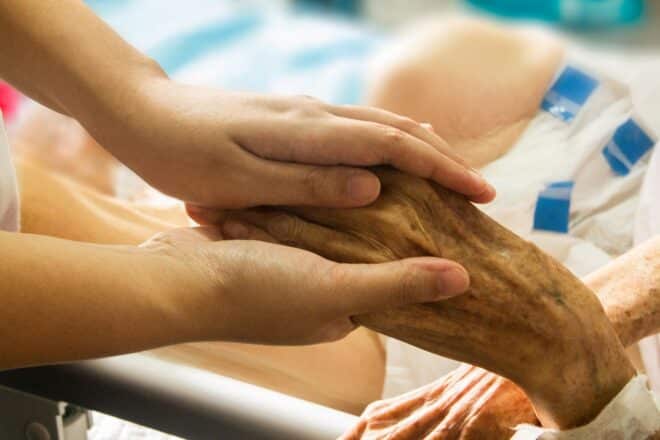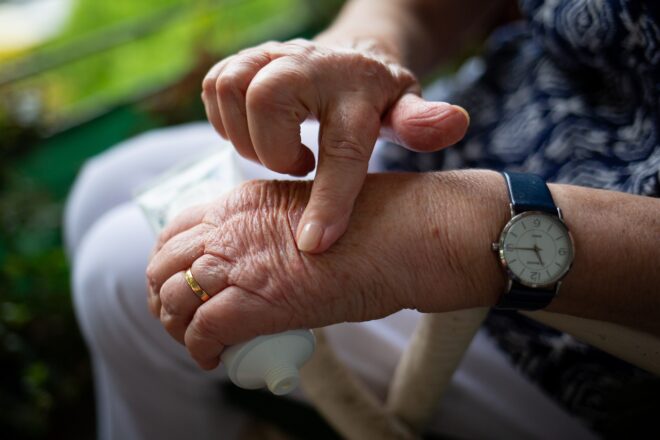In the heartening article “Palliative Care and Hospice: Navigating Your Loved One’s Dying Process”, you’ll discover invaluable insights on how to manage an extremely delicate yet inevitable phase of life– the dying process of a loved one. The intricate path to death is unique for every individual and being able to provide comfort, dignity, and reassurance is paramount during this time. By focusing on aspects like understanding hospice care, acknowledging the signs of approaching death, knowing when to say goodbye, and finding help and support; this resource aims to equip you with the understanding and empathy required to ease this challenging journey. A read that is both touching and instructive, it assures that you’re not alone during these testing moments.

Understanding Palliative Care
Defining palliative care
Palliative care, a specialized form of medical care, focuses on providing relief from the symptoms and distress caused by serious illnesses. It aims to improve the quality of life for patients and their families, dealing with physical, emotional, social, and spiritual aspects of care.
Goals of palliative care
The primary goal of palliative care is to provide comfort and support to patients who are struggling with severe and potentially life-threatening diseases. This may involve managing painful symptoms, providing emotional and psychological support, coordinating care with other healthcare providers, and helping make medical decisions.
Who is involved in providing palliative care
A team of specialized health care professionals usually provide palliative care. This team may comprise doctors, nurses, social workers, chaplains, and other specialists. They work in collaboration with your primary healthcare provider to manage your care.
When is it time to consider palliative care
You should consider palliative care if you or a loved one is suffering from a serious illness, particularly if the symptoms are leading to a reduced quality of life or causing major stress for the family. It is not limited to end-of-life situations but can be introduced at any point once a serious illness has been diagnosed.
Exploring Hospice Care
Defining hospice care
Hospice care is a type of care designed for individuals in the final stages of terminal illness. It focuses on comfort rather than curing the illness, and it also provides necessary support for the patient’s family.
Role of hospice care in the dying process
During the dying process, hospice care’s main role is to provide comfort, dignity, and quality of life for the individual. This includes pain management, emotional and spiritual support, and assistance with everyday tasks.
Difference between palliative care and hospice care
While both types of care aim to relieve suffering and enhance quality of life, the main difference lies in their application. Palliative care can be initiated at any stage of a serious illness, while hospice care is typically resorted to when treatment is no longer curative – usually in the last six months of life.
Components of hospice care
Hospice care comprises various components, including medical services, pain management, emotional and psychological support, spiritual care, and help with personal care and daily activities. Additionally, it offers bereavement support to families after the patient’s death.
Recognizing Signs That Death Is Near
Physical signs of imminent death
In the final days or weeks of life, a gravely ill person might sleep or doze off more, eat and drink less, and increasingly withdraw from people. They might encounter different sleep-awake patterns, have changes in blood pressure, breathing, and heart rate, temperature fluctuations, and congested breathing.
Behavioral and emotional signs
As death approaches, your loved one might display more signs of withdrawal, confusion, or disorientation. They might also have hallucinations or visions, which can sometimes provide them with comfort.
How the dying process varies among individuals
Each person’s journey to death is unique, shaped by their illness, resilience, and surrounding environment. Some people may gradually decline while others might fade rapidly. Understanding this variability can help manage expectations and provide appropriate care.
How to Comfort Your Loved One during Dying Process
Creating a comforting environment
A tranquil, well-lit, but not overly bright room can help create a soothing environment for your dying loved one. It’s essential to have continuous presence, reassuring your loved one that they are not alone.
Physical comfort measures
Managing pain, solving breathing difficulties, ensuring cleanliness, and maintaining a comfortable room temperature are key to maintaining physical comfort.
Emotional and spiritual support
Offering emotional reassurance, listening to fears and concerns, offering meaningful touch, and ensuring spiritual needs are met can offer immense emotional and spiritual support to a dying loved one.
Communicating effectively with a dying loved one
Even when your loved one may drift in and out or become unconscious, it’s crucial to continue to interact with them. They can often still hear and feel. Ensuring they know that they are loved and their life mattered can provide emotional comfort.

Managing Pain in the Dying Process
Types of pain in the dying process
Pain in the dying process can manifest in various forms – it can be physical, stemming from the disease or its treatment, or it can be emotional, resulting from fear, anxiety, or depression.
Medicines for pain relief
The use of appropriate medication is crucial in managing pain in the dying process. These may range from analgesics, like opioids, to adjuvant therapies for treating pain related to nerve damage.
Non-medical strategies for managing pain
These may encompass complementary therapies such as massage, music therapy, meditation, or guided imagery. Non-medical strategies can be effective adjuncts to medicinal pain relief.
Handling Hallucinations and Visions in the Dying
Why hallucinations occur
It’s not uncommon for people nearing death to have hallucinations or visions. These might be caused by changes in the brain and body due to illness, medication side effects, or they may reflect psychological or spiritual beliefs.
How to react to your loved one’s hallucinations
React to hallucinations with empathy and understanding. If the visions provide comfort, there’s no need to contradict them. However, if they cause fear or agitation, reassure your loved one about their safety.
When to seek professional help
If the hallucinations begin causing considerable distress, disrupt care, or signify a severe medical issue, it’s time to consult with healthcare providers.

Preparing for the Final Days or Hours
Changes to expect in the final hours
As life nears its end, you may notice: discontinuation of food or drink, reduced urination and bowel movements, inconsistent pulse and heartbeat, temperature drops, interrupted breathing, and skin turning bluish-purple.
How to ensure your loved one’s comfort and dignity
Stay present, provide emotional support, manage pain effectively, and tend to any spiritual or religious rituals. Always reassure them you’re there.
Understanding the importance of staying present
Your role in the end is to be a comforting presence, providing reassurance that your loved one is cared for, and is not alone.
The Role of Goodbyes in the Dying Process
Determining the right time to say goodbye
The right time to say goodbye is very personal and different for everyone. For some, it may be when they are first diagnosed with a terminal illness. Others might wait until their condition worsens significantly, or at the very end of life.
Ways to say a meaningful goodbye
A meaningful goodbye can be said verbally, through a letter, via a symbolic gesture, or even through silence. Remember, a goodbye isn’t just about saying “I’ll miss you,” it’s also about expressing love, gratitude, forgiveness, and acceptance.
Dealing with feelings of loss and grief
Feelings of loss and grief are normal when saying goodbye to a dying loved one. These emotions can be overwhelming and may vary from person to person. Be kind to yourself during this process and seek support when needed.
Navigating Personal Grief and Loss
Understanding the stages of grief
The stages of grief, as proposed by Elizabeth Kubler-Ross, include denial, anger, bargaining, depression, and acceptance. It’s important to understand that everyone experiences and moves through these stages differently.
Healthy coping techniques
Healthy coping techniques can include expressing your feelings openly, maintaining a daily routine, taking care of your health, remembering your loved one, and seeking support from others.
Seeking professional help for grief and bereavement
If your grief becomes overwhelming, unmanageable, or persists for a prolonged period, it may be helpful to seek help from a mental health professional specializing in grief and bereavement.
Resources for Caregivers and Family Members
Support groups and resources for those dealing with a loved one’s death
There are various support groups and resources for dealing with loss, including counseling services, online communities, and bereavement support groups. These services can help individuals feel less isolated in their grief.
Coping strategies for caregivers
Caregivers can also experience intense grief and loss. Using coping strategies like engaging in self-care, seeking out supportive networks, taking time for leisure activities, and possibly seeking professional help can be beneficial.
The importance of self-care for caregivers and family members
Self-care is vitally important for caregivers and family members. This means looking after your mental, emotional, and physical health, ensuring you take time to rest, eat healthily, and take breaks from the care-giving environment when necessary.
